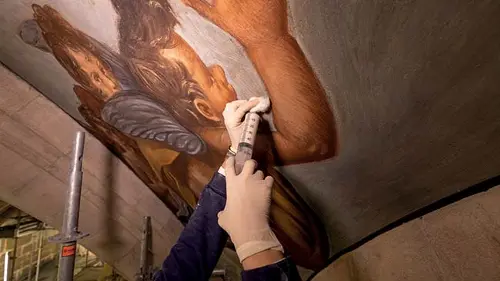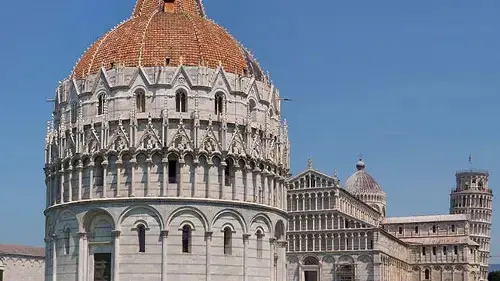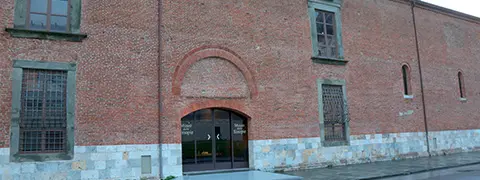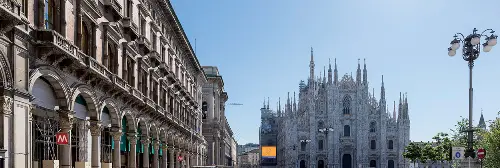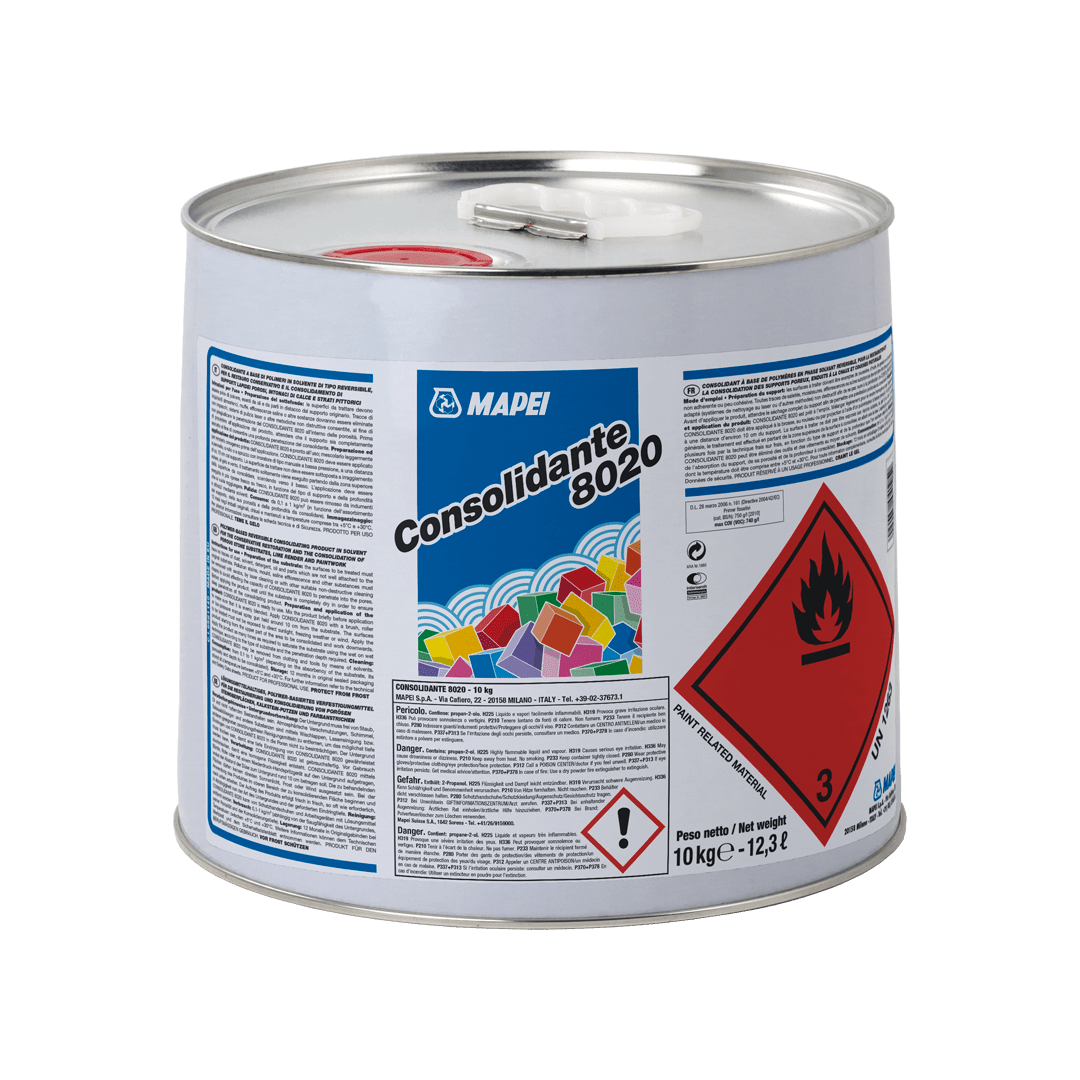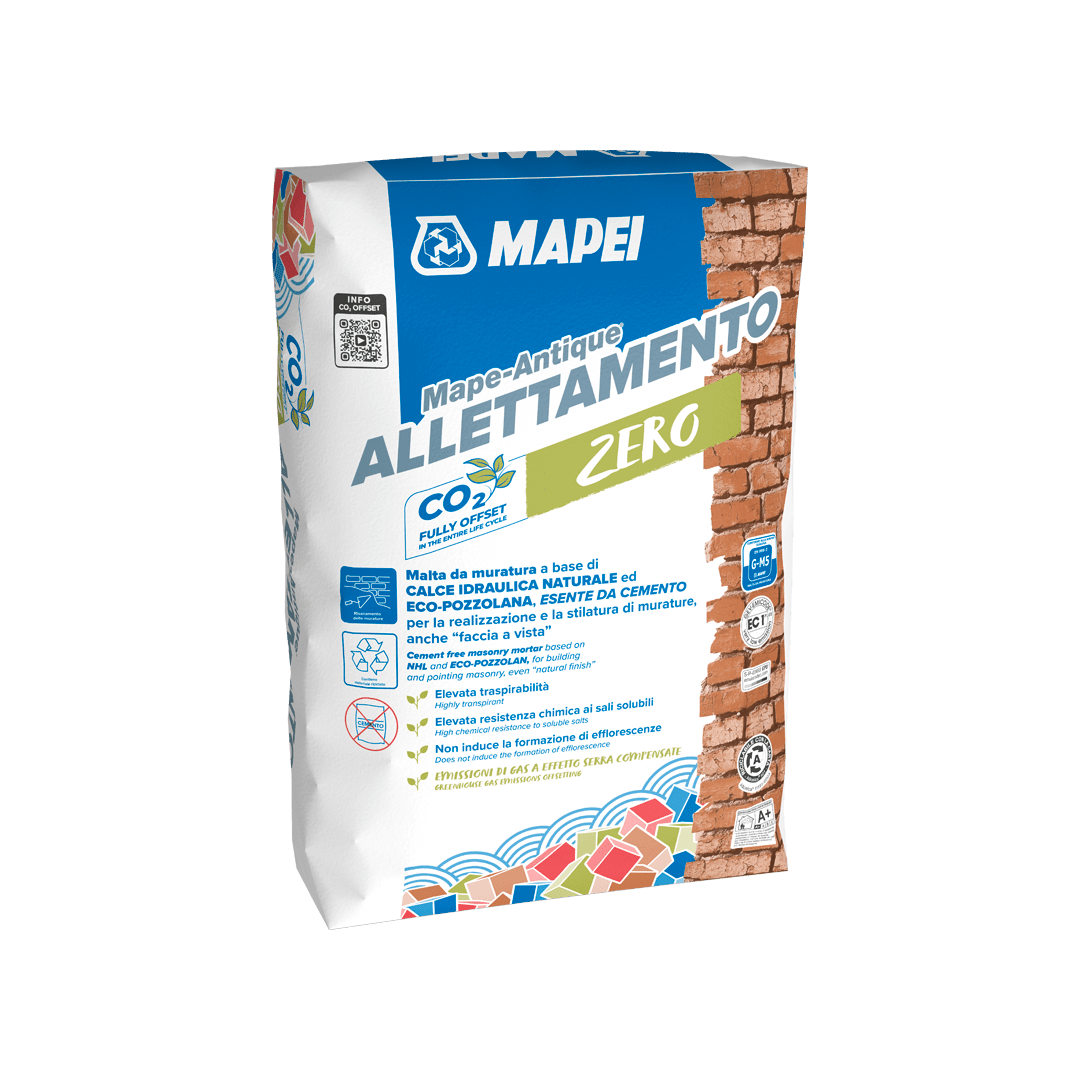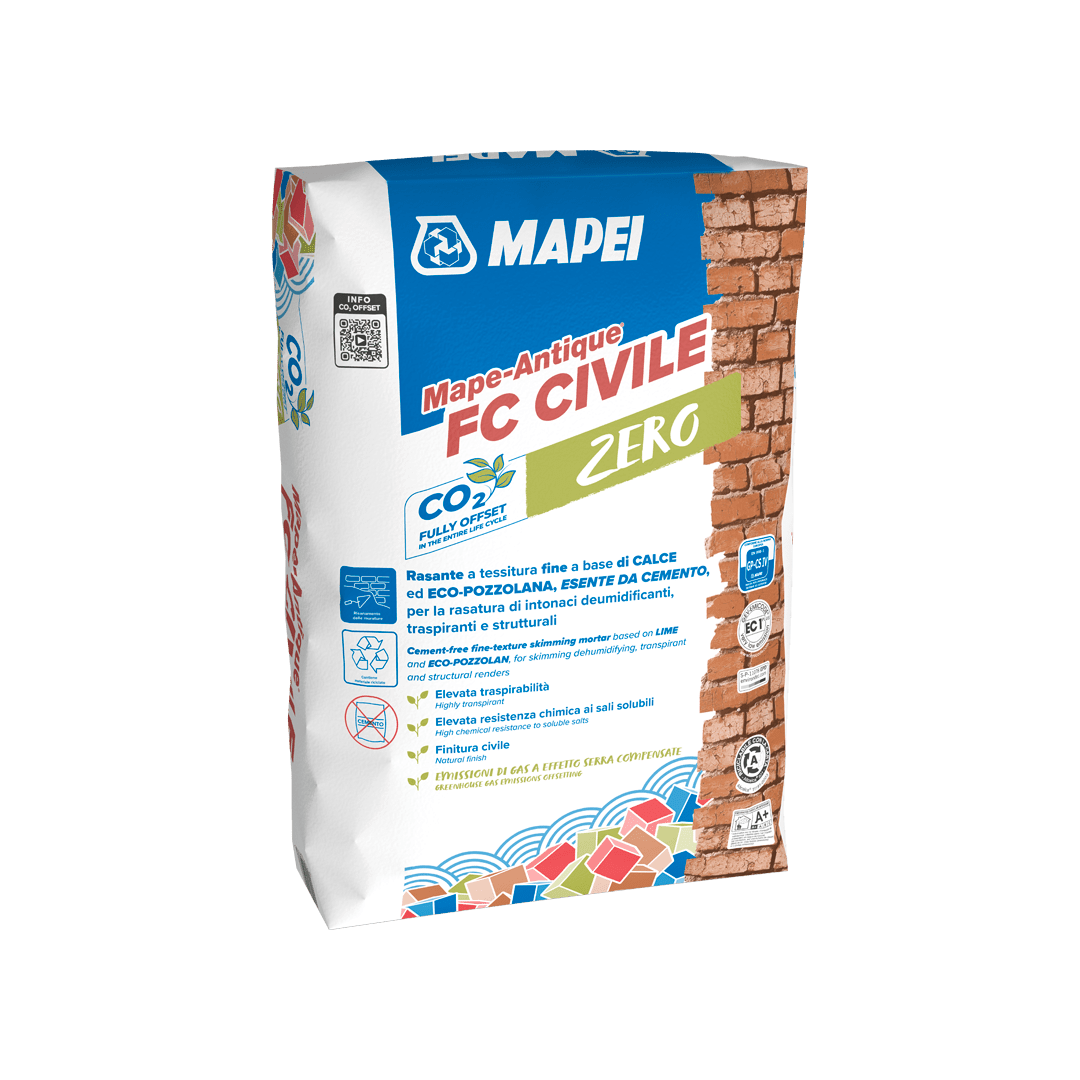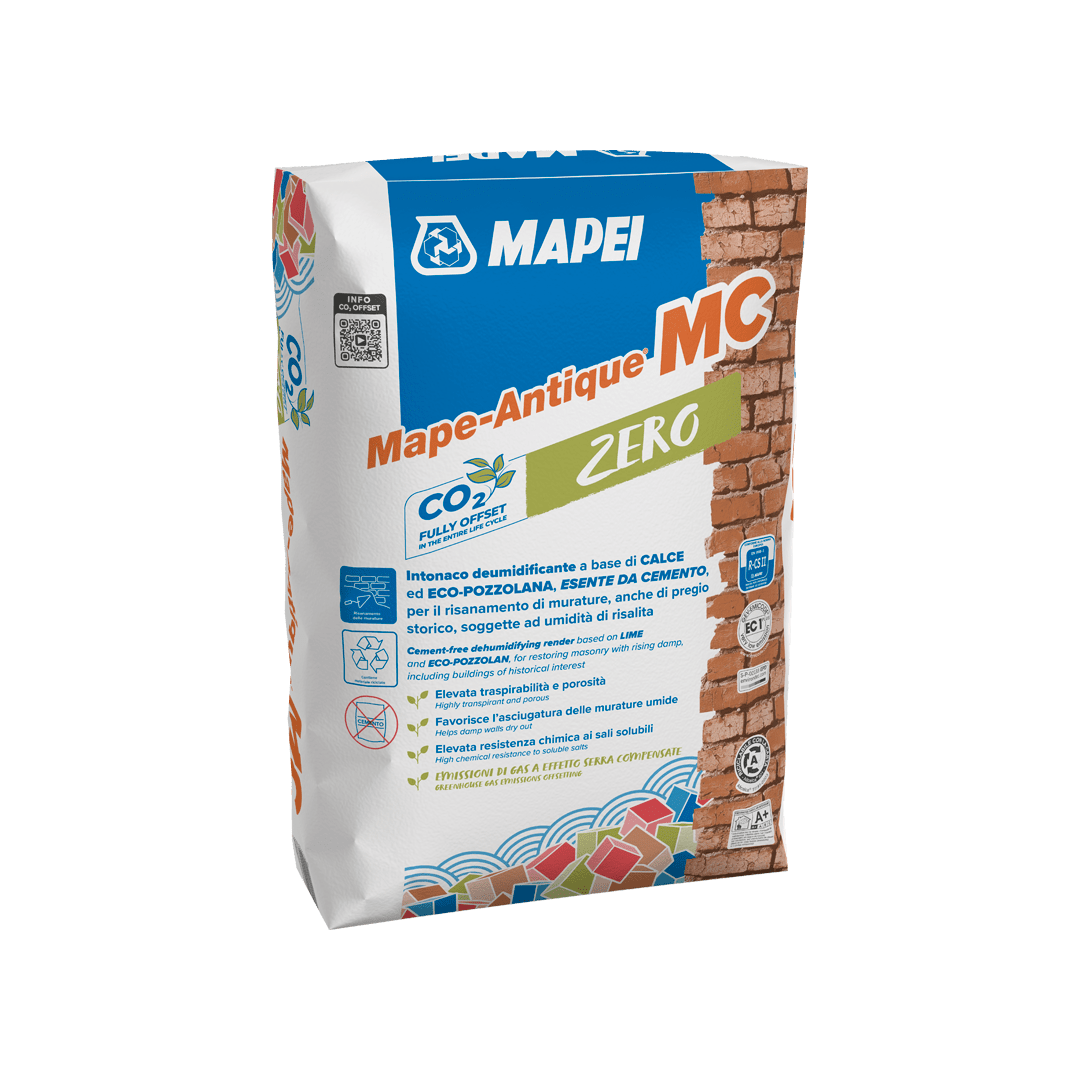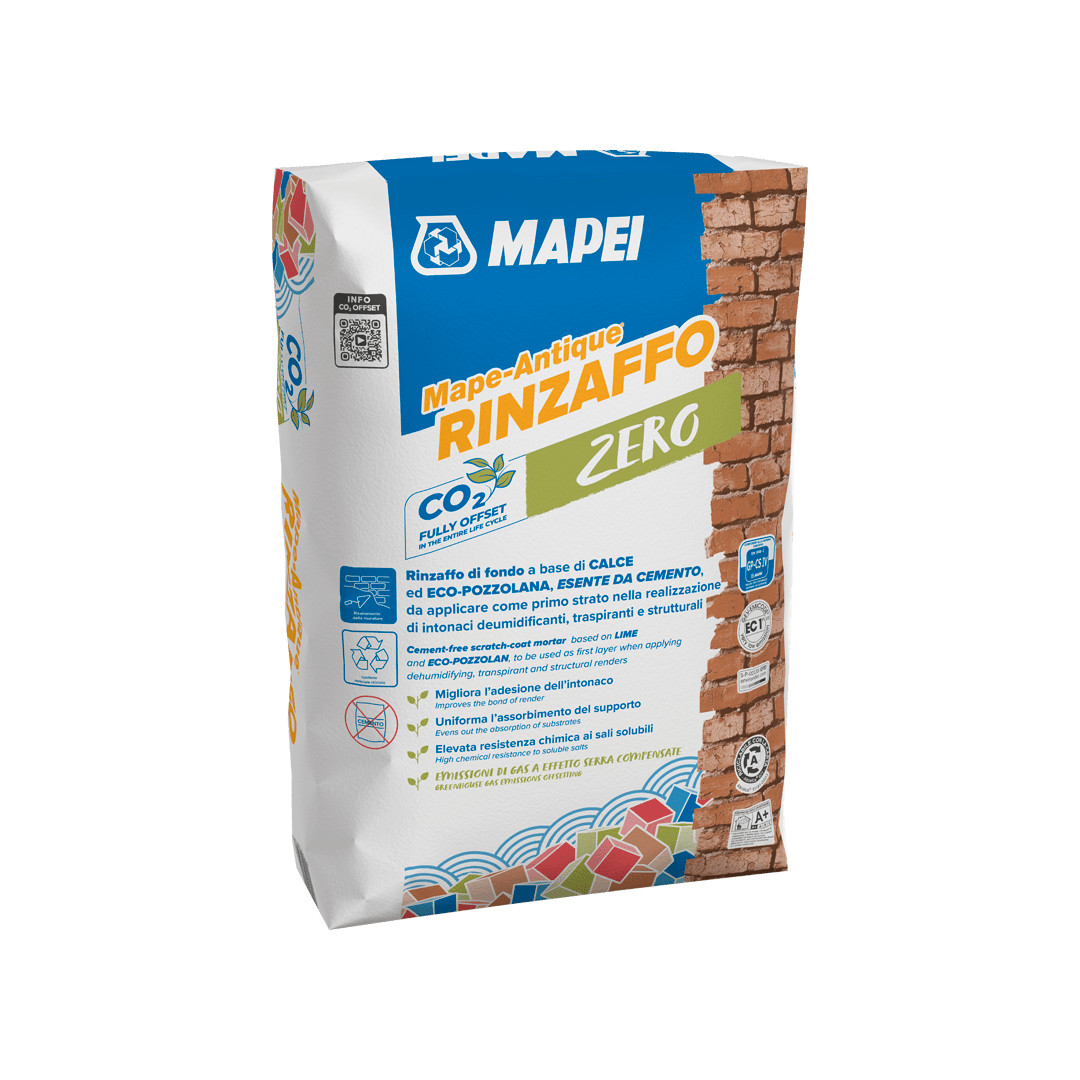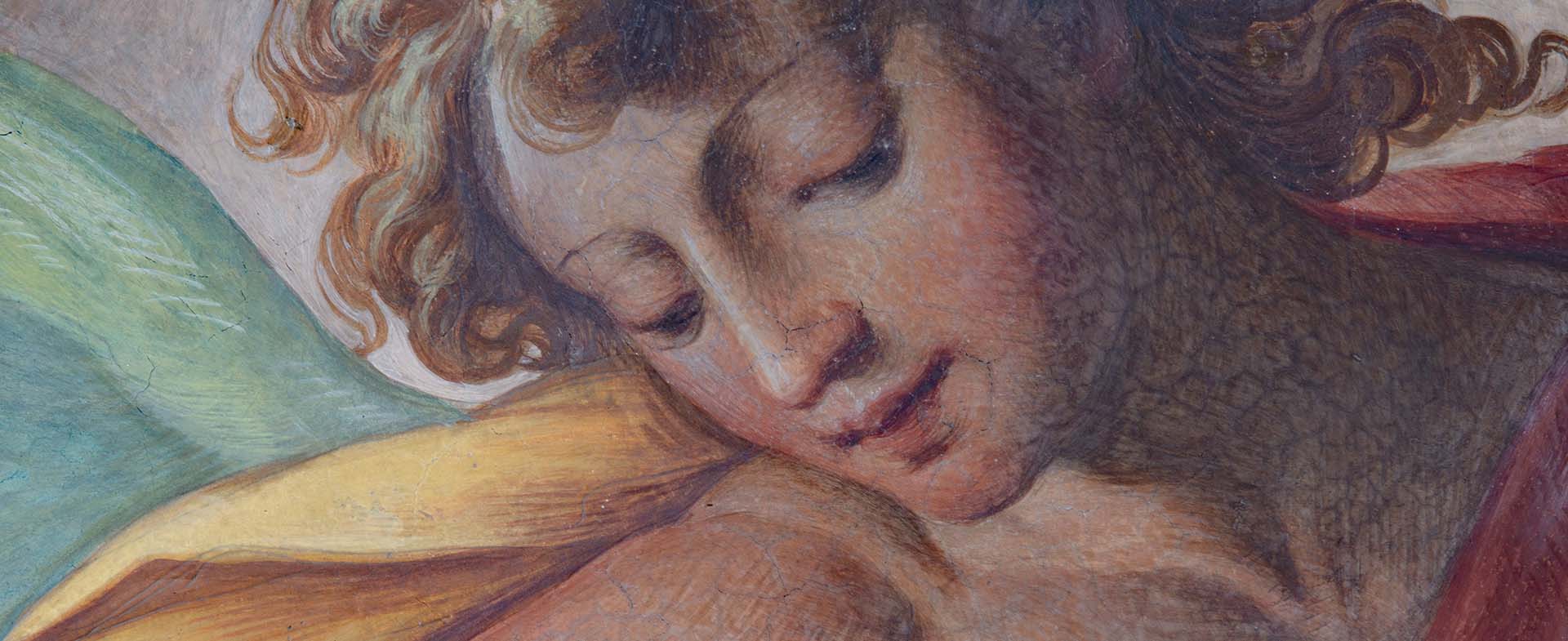
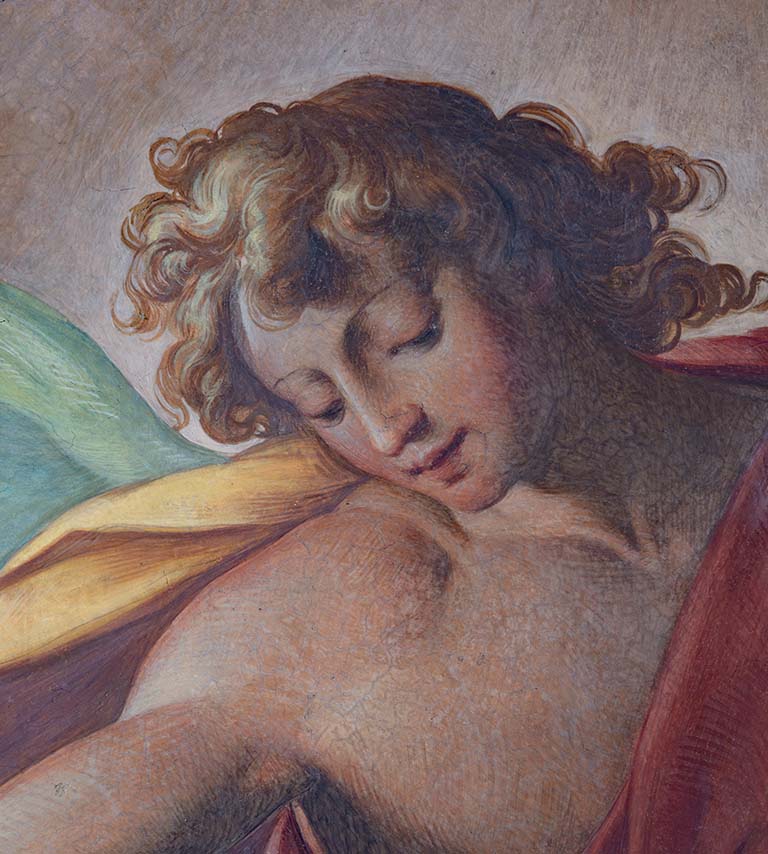
The restoration of the Aquilonare Sacristy in Milan Cathedral
A complex restoration intervention on the portal, the marble floors and the frescoes by Camillo Procaccini.
The restoration of the Aquilonare Sacristy
To find the origins of Milan Cathedral, you have to look at the Sacristy: this was the first area to be built after the foundation stone had been laid towards the end of the 14th century, and it is here that the first chapel and altar where services were celebrated can be found. The building of the Aquilonare Sacristy – the term “aquilonare” comes from the late-Latin word aquilonaris (northern) – started in 1386, on the very spot where St. Ambrose himself was baptised just a few days before becoming Bishop of Milan.
The restoration of the Aquilonare Sacristy is one of the projects the Veneranda Fabbrica del Duomo (the organization in charge of preserving Milan Cathedral) was particularly passionate about. Restoration work started four years ago and involved the frescoed vaulted ceilings, the pointed portal, and the marble floors.
Painted by Camillo Procaccini in the late 16th century, the frescoes on the vaulted ceiling were created during the rebuilding work following the fire on Christmas Eve in 1610.
Dating back to 1389, the portal was designed by Giacomo Da Campione and is the oldest sculptural work in the Milan Cathedral.
The restoration work also included the marvellous inlaid floor in white and pink Candoglia marble, black Varenna marble and red Arzo marble, in which a six-pointed Star of David symbol is the dominating feature.
The restoration work of the Aquilonare Sacristy involved the frescoed vaulted ceilings, the pointed portal, and the marble floors. Mapei contributed once again in the restoration work on this symbol of Milan.
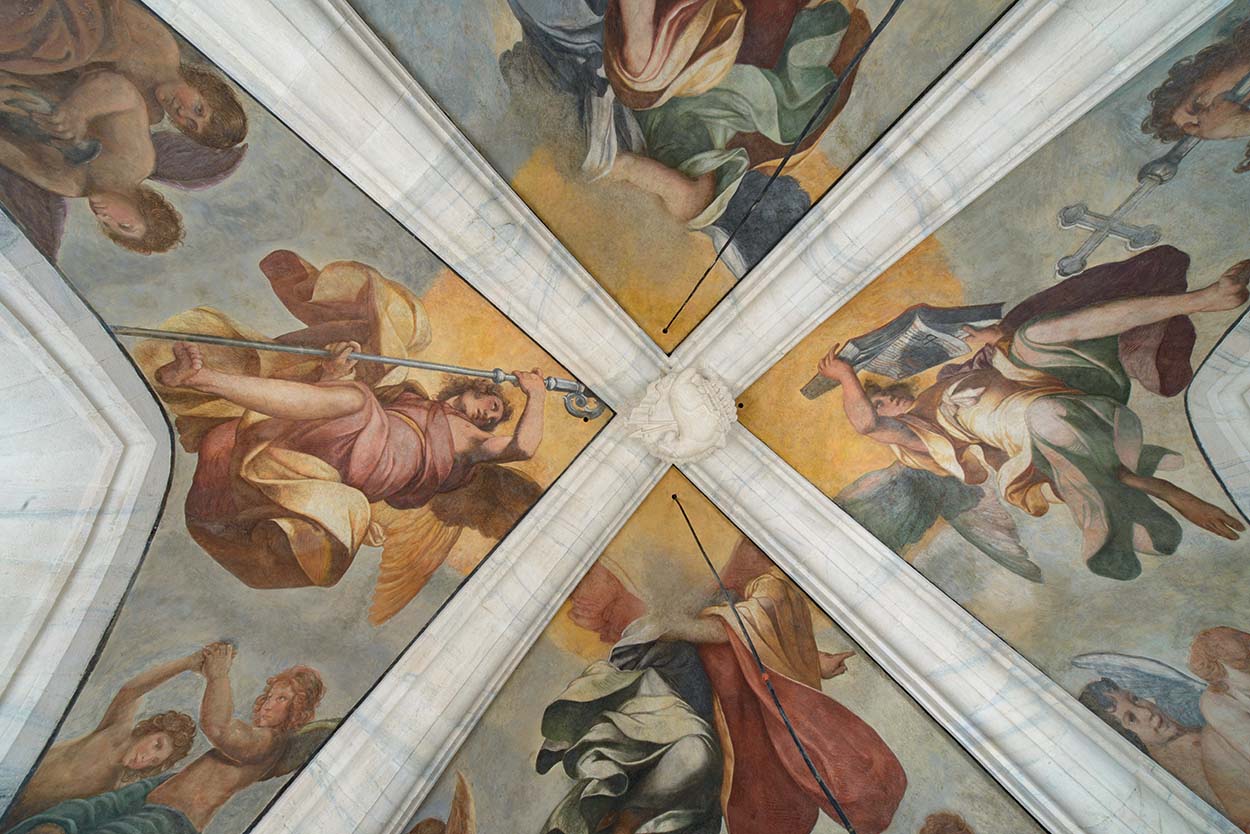
Restoring the frescoes on the vaults and marble ashlars: the contribution by Mapei
Mapei, which became a Golden Donor and a member of the “Get a Spire” club of Milan Cathedral
(see Realtà Mapei International
no. 69), wished to contribute once again in the restoration work on this symbol of Milan and provided all its technical knowledge and expertise to help overcome a number of complex problems. Mapei products and systems were used to consolidate cracked substrates, restore the frescoed render, grout joints and rebuild render.
As for the frescoes, once the scaffolding had been erected, the restoration company (Centro di Restauro di Paola Zanolini e Ida Ravenna), along with Works Director Francesco Canali, found that, in the past, the frescos by Camillo Procaccini had been pulled off from one of the two spans using the “strappo” (tearing) technique and that the frescos, transferred onto canvas, had been bonded directly to the render, but inadequately. The situation was very serious because the parts they inspected were in an advanced state of deterioration that wasn’t visible from floor level, with all the surfaces covered by a film of dirt from the smoke given off by candles, as well as widespread fading of several portions.
After studying the archives, it emerged that the documentation available only mentioned the two most recent restoration works on the frescoes. The first one, dating back to the middle of the 18th century by the painter, Giuseppe Knoller included the demolition of the frescoed render on the eight segments of the ribs, re-rendering them with lime mortar and then painting rather unrefined frescoes depicting angels and cherubs. The second restoration intervention dates back to 1964 and was carried out by the restorer Tino Anselmi, who was commissioned to pull off the frescos from the four ribs of the first span in the Sacristy, which had also been damaged by infiltrations of water and had salts coming through, causing the colour to become “crumbly”. After putting the pulled frescoes back in place, Anselmi then repainted and blended in a lot of different parts of the vaulted ceiling.
Work carried out on the 1st span
After pulling off the frescoes in the 1960s, they were bonded to very thin canvas with caseinate (casein and lime putty) which, over the years, had lost its bonding power, with serious consequences for the stability of the colour; the missing areas were patched up with pieces of canvas and then covered with tempera applied directly on the canvas without any base grout. After pulling off the frescoes, the original render had been demolished and then rebuilt using cementitious render. The frescoes, which at this point were attached to canvas, had then been repositioned on the new render using contact adhesive but were not laid flat and large blisters and creases appeared in the canvas. Over the years, the adhesive lost its properties and the frescoed canvases started to detach from the render, putting the stability of the entire feature at great risk.
After removing all the dusty and crumbling material and then laying on a thin layer of washi paper, the restoration company (Centro di Restauro di Paola Zanolini e Ida Ravenna) proceeded to detach the frescoed canvases and, once they had been taken down to ground level, the adhesive was removed from the back of the canvases using sprayed water and an iron. All the portions of fresco then had a new canvas backing applied and the layer of washi paper was removed. Then, skilful, expert hands restored all the frescos which were later bonded back to the ceiling in their original position using ULTRAMASTIC 5, a special ready-to-use, white paste adhesive. The joint lines between the different portions were filled and blended in by carefully painting them to mask the joints. The method adopted to reintegrate the paintwork meant that small and medium-sized areas of missing paintwork could be touched one by one, while the larger areas were blended in with the colours of the fresco around them without carrying out any further repair work.
While restoring the frescos, the company also restored the marble ashlars, especially the ribs of the two cross-vaulted ceilings and the two large, central keystones. The marble elements had become completely blackened by an extremely compact, thick layer of dust, smoke and particulate matter. The joints between the ashlars had been sealed in the 1970s with conglomerate made from sand, marble powder and dark pigmented epoxy resin to match the colour of the blackened marble, which was applied in large quantities and spread roughly over the surfaces so that large portions of the marble ashlars were also covered.
The cleaning phase consisted of repeatedly applying meerschaum and arbocel compresses with ammonium carbonate and, due to the sheer thickness and toughness of the layer of dirt, they were left in place for several days. Removing the grouts from the joints proved to be much more complex and time consuming. Heat and hand and power tools were used and gave an excellent result.
The joints grouted with cementitious mortar were cleaned by the specialised craftsmen from the Veneranda Fabbrica del Duomo and then filled with MAPE-ANTIQUE ALLETTAMENTO cement-free, natural hydraulic lime-based mortar. They were then coloured, a little at a time, to blend them in with the various shades of the marble. This mortar was chosen for its chemical-physical and elastic-mechanical compatibility with the properties of the mortar originally used and is also resistant to soluble salts, so does not suffer “attack” by soluble salts present in the structure from previous restoration works using cementitious mortars.
Work carried out on the 2nd span
The frescos in the second span, also the work of Camillo Procaccini, were more fortunate from a conservation point of view than those in the 1st span, in that they had not been damaged by infiltrations of water from the roof above. The painted render, however, had also been removed from the segments in these ribs in the 19th century and, in this case, had been restored with cementitious mortars and then frescoed by Knoller using the only two remaining segments, on the eastern side, as models. The problem regarding the conservation of this vaulted ceiling was the stability of the frescoed render, with almost half of the entire surface worryingly detached from the underlying masonry structure. The first operation by the restorers was to consolidate the frescoed render by inserting fibreglass studs to “tie” the render to the masonry.
Then, MAPE-ANTIQUE F21 cement-free, lime-based hydraulic binder, which doesn’t contain any type of polymer and has no way of releasing soluble salts, was injected to re-establish the bond between the frescoed render and the substrate. Some portions of render on some of the segments without any type of decoration were completely demolished and then rebuilt using mortars from the MAPE-ANTIQUE range, a family of cement-free, lime-based products with the capacity to resist chemical aggression by salts present in the underlying substrate from the cementitious mortars used previously and infiltrations of water. The skilful experts of Veneranda Fabbrica del Duomo then applied a scratch-coat to even out the absorption of the substrate (MAPE-ANTIQUE RINZAFFO) followed by a layer around 2 cm thick of macro-porous dehumidifying render (MAPE-ANTIQUE MC). It was decided to use this render because, in the underlying substrate, there was a high content of soluble salts and moisture. MAPE-ANTIQUE MC facilitates the expulsion of moisture while, at the same time, because of its particular formulation, chemically resists the aggressive nature of the salts themselves. To blend in the portions of new render with the old render, the craftsmen from the Veneranda Fabbrica applied a fine-textured skim coat (MAPE-ANTIQUE FC CIVILE) followed by a coat of mineral finish.
From the first cleaning tests carried out by the restoration company to remove the salts, they found that the rebuild of the cementitious base render was not limited to just the segments, but also interested vast areas of the backgrounds of the ribs. Fortunately, the four marvellous figures depicting angels were well preserved and intact. At this point the team was faced with a difficult decision on how to intervene: whether to conserve them or not but, more importantly, how to intervene, since there was a marked geometric and chromatic contrast with the originals. The Works Director and Laura Paola Gnaccolini, an official from the Local Heritage Authority appointed to safeguard the Sacristy, discussed the various possible approaches to restoring this historic feature. They finally decided to conserve the previous restorations by adapting them to the original colours to bring back a sense of unity and legibility to the entire frescoed décor while, at the same time, offering the vision of an area of the Cathedral as it would have appeared originally: a particularly light ambience with vaulted ceilings entirely decorated in bright colours.The frescoes were cleaned in two stages: firstly, the salts which had made the large, repainted areas so noticeable were removed, followed by the removal of the dirt, fixatives and smoke by applying compresses and, in the tougher areas, with the help of scalpels.
Once they had been cleaned, the frescoes were found to be in a good state of conservation and their colours only needed to be touched-up slightly, whereas the restoration work by Knoller was found to be very patchy with vast areas missing. Restoration of the paintwork in these portions of the vaulted ceiling was long and complex because they were faced with two challenges: numerous, large areas of the paintwork were missing and had to be recreated and all these parts had to blend in with the original.
Work carried out on the walls of the Sacristy
The walls of the Sacristy, which have three large glass windows, were built from blocks of overlapping marble, apart from the southern wall in the second span and the western wall which were painted to look like marble ashlars.
All the surfaces had been blackened by smoke and deposits of particulate matter and had drips of grey lead paint and cement from work carried out on the metal parts of the windows. Also, the northern wall had marks where water had run down the surface and deposits of crystallised salts. These blocks of marble had also been filled in the 1970s by a mix of aggregates and epoxy resin. The joints in the southern wall, on the other hand, had been grouted with cementitious mortar.
The restoration work on the walls was very similar to the procedure adopted for the large ribs of the vaulted ceiling, with the removal of the grouts from the joints and then re-filling them with MAPE-ANTIQUE ALLETTAMENTO pigmented to suit. Also, a special consolidation treatment was used for both the render and the colour consisting in the application of CONSOLIDANTE 8020, a polymer-based, reversible consolidating product. The restoration company repainted the areas of bare render, the same intention as at the beginning of the 20th century to create a kind of trompe l’oeil, while the walls were painted to look like marble ashlars, similar to the other walls.
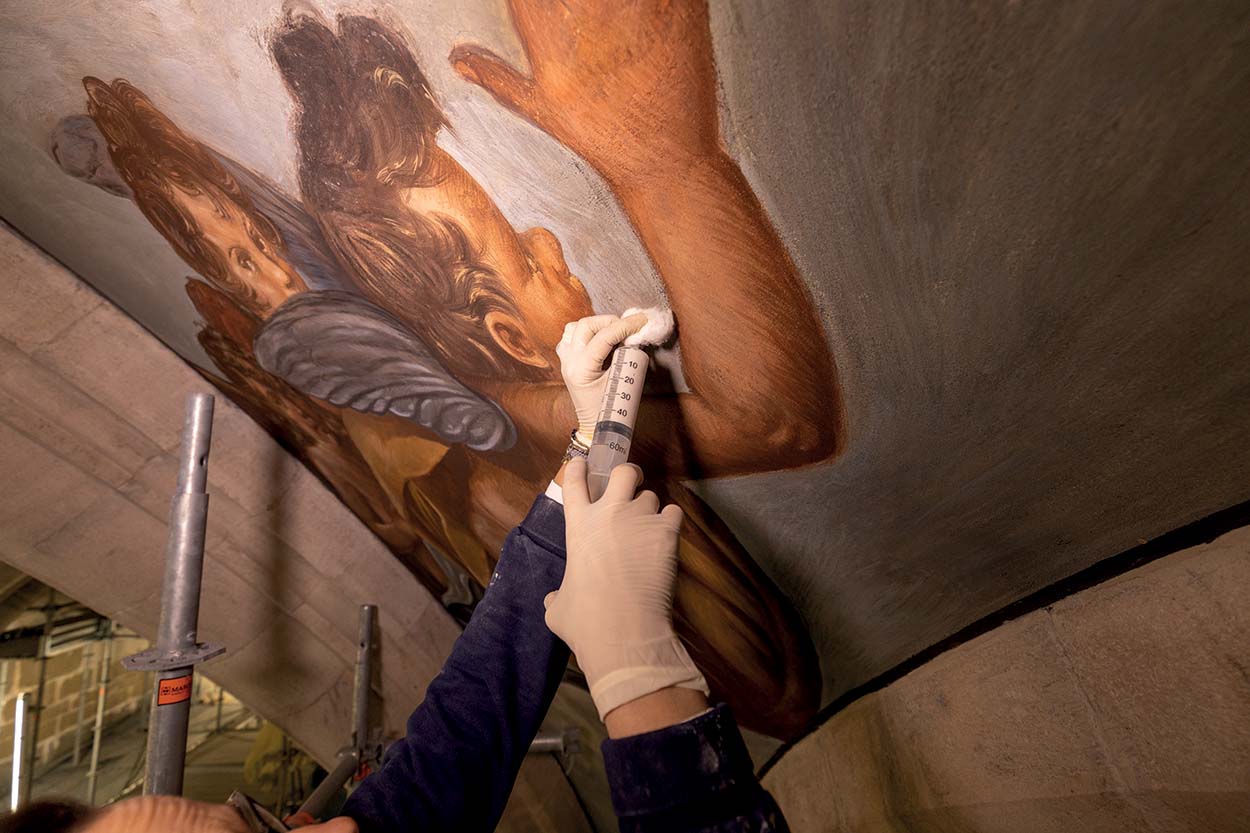





_detail_mapei-solutions-for-the-masterpiece-by-camillo-procaccini.jpg?sfvrsn=f438ab8c_4)
